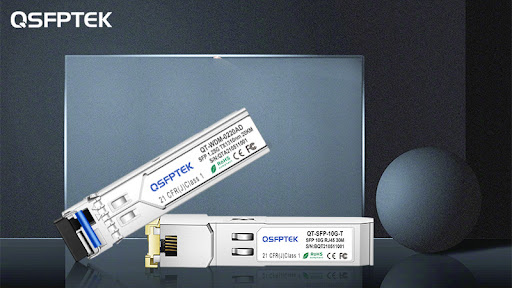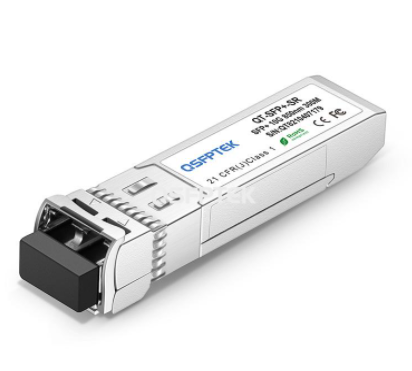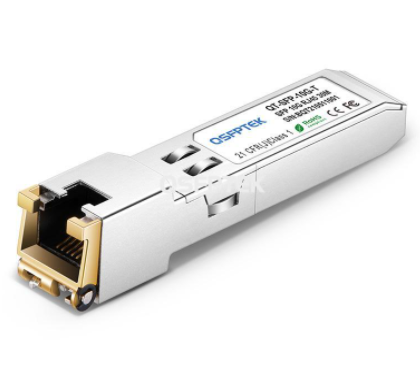As the name suggests, 10GbE is an Ethernet network that operates at a transmission speed of 10Gbps at the physical layer. Operating at a transmission speed of 10Gbps is the basic purpose of 10GbE. Considering that there are great differences in the requirements for connection transmission distance and construction cost in different application environments, IEEE has formulated a 10GbE physical layer specification covering a variety of transmission line and port specifications. , in order to meet the needs from wide area network (WAN) to local area network (LAN), from enterprise campus backbone network, data center, high-performance computing cluster connection, to the internal backplane of switches, servers and other equipment, a variety of 10GbE connection requirements of the environment.

Table of Contents
Two Types of Transmission Media: Fiber and Copper Cable
In terms of application environment, the physical layer of 10GbE is divided into two types: local area network and wide area network. The latter has an additional WIS (wide area network interface) sublayer that is compatible with SONET/SPH.
From the perspective of transmission medium, WAN 10GbE uses optical fiber, and the specifications can be connected with existing SONET/SDH WAN equipment, while the 10GbE of local area network has two types of transmission media such as optical fiber and copper wire.
Although 10GbE can also be used in WAN, it is still mainly used in local area network applications. Therefore, we will only discuss the 10GbE local area network 10GbE below. As mentioned above, the 10GbE local area network can use two transmission media, optical fiber and copper wire, and based on these two media, there are various related specifications that use different connection technologies.
Among them, the most common types of copper wires are 10GBASE-CX4, which was launched earlier, using InfiniBand-like cables and ports, 10GBASE-Cu, which uses twin-core cables and SFP+ connectors, and 10GBASE-Cu, which was launched later, using UTP twisted pair and RJ45. 10GBASE-T of the port, etc.
In terms of optical fiber types, there are 10GBASE-SR, 10GBASE-LR, 10GBASE-SR, 10GBASE-LR, Xenpak, X2, XFP, SFP+ and other transceiver modules for short-distance transmission and long-distance transmission, using single-mode or multi-mode optical fibers respectively. 10GBASE-ER and other specifications.
10GbE Connections Based on Fiber Cable
It can be divided into two basic types: multimode fiber (MMF) for short-distance transmission and single-mode fiber (SMF) for long-distance transmission. Common specifications include the following:
10GBASE-SR
Multimode fiber specification for short-distance transmission (SR means Short Reach), using a laser light source with a wavelength of 850nm, depending on the grade of fiber optic cable used, the maximum transmission distance of 10GBASE-SR can reach 26 meters (FDDI-grade 62.5μm ), 33 meters (OM1 62.5 μm), 82 meters (OM2 50 μm), 300 meters (OM3) or 400 meters (OM4).

10GBASE-LR and 10GBASE-ER
10GBASE-LR is a single-mode fiber for long-distance transmission (LR means Long Reach), using a laser light source with a wavelength of 1310nm, and the transmission distance is 10 kilometers.
As for 10GBASE-ER, it is a single-mode fiber for long-distance transmission with a longer transmission distance than 10GBASE-LR (ER is the abbreviation of Extended Reach), the operating wavelength is 1550nm, and the maximum transmission distance can reach 30 or 40 kilometers.
10GBASE-LRM
The long-distance transmission specification (Long Reach Multimode) using multimode fiber, the operating wavelength is 1310nm. Although multi-mode fiber is used, 10GBASE-LRM can achieve a maximum transmission distance of 220 meters on old FDDI-grade or OM1-grade fiber optic cables through Electronic Dispersion Compensation (EDC) technology. If OM3-grade is used Cables can also reach 260 meters, and some non-standard transceiver modules can even reach transmission distances of 300 meters.
10GBASE-LRM is targeting applications that have many older fiber optic cables but want to upgrade to 10GbE, but the market push has not been very successful, and this specification is rarely seen.
10GBASE-ZR
10GBASE-ZR is a single-mode long-distance transmission specification promoted by manufacturers led by Cisco. It adopts 1550nm wavelength and has a maximum transmission distance of 80 kilometers, which is twice as high as 10GBASE-ER, but it is not included in the IEEE specification.
10GbE Connections Based On Copper Cable
Compared with optical fiber, although the effective transmission distance of copper wire is shorter, it has the advantages of relatively low cost and easy maintenance, and is more suitable for short-distance transmission below 100 meters. Today, the 10GbE specification of copper wire type has become the key to the popularization and application of 10GbE.
10GBASE-CX4
The earliest copper wire type, 10GbE, uses IBX4 ports similar to InfiniBand technology, and 4 pairs of twin-coaxial copper wire specifications, with a transmission distance of up to 15 meters.
Unlike UTP twisted pair cables that can be patched at the installation site, CX4 cables must be patched at the length specified by the user before leaving the factory. Generally speaking, the longer the transmission distance, the thicker the CX4 cable, and 30 AWG can be used for short distance transmission. Specification cable, to reach the maximum transmission distance of 15 meters, a thicker 24 AWG specification cable must be used.
The advantages of 10GBASE-CX4 lie in low power consumption, low latency, and low cost. It was often used in high-performance computing environments in the early days. The disadvantages are short transmission distance and large connection port footprint. In addition, the relatively thick and rigid CX4 cable , there is also the problem of inconvenient wiring, and most of them have been replaced by SFP+Direct Attach.
SFP+ Direct Attach Cable
Also known as 10GBASE-CX1, SFP+ Direct Attach uses the same SFP+ transceiver module frame as 10GBASE-SR/LR, but omits the active optical module for driving signals, and directly connects a passive dual The core copper wire can allow a transmission distance of 5 to 7 meters.
SFP+Direct Attach Cable has the characteristics of low power consumption, low latency and low cost similar to 10GBASE-CX4. Although the effective transmission distance is short, the size of SFP+ transceiver is much smaller than that of CX4, which is suitable for high-density arrangement of transmission ports. In some occasions, the cable is also much lighter, the wiring and connection are far more convenient than the CX4, and the connection distance is also sufficient to meet the needs of the server to connect to the switch in the general equipment room.
SFP+ Direct Attach Cable can also use active copper wire (including signal amplification and equalization functions) to achieve a larger transmission distance, but the relative delay and power consumption will increase.
10GBASE-T
The latest type of 10GbE copper wire specification can use unshielded twisted pair cables and RJ45 ports similar to 1000BASE-T (GbE) to achieve 10Gbps transmission rates, but must use CAT 6 or higher cables instead of CAT 5 or CAT 5e etc. and cables commonly found in GbE environments.
When using CAT6a or CAT7 cables, 10GBASE-T can theoretically reach a maximum transmission distance of 100 meters, and if using CAT 6 cables, it also has a transmission distance of 55 meters.
The early 10GBASE-T interface card has the problem of excessive power consumption. The power consumption of the transceiver module is 3 to 4 times higher than that of the 10GBASE-SR fiber specification, even close to the critical value allowed by the PCIe bus.
But the power consumption of the new generation 10GBASE-T interface card has been reduced a lot. Because it is compatible with the GbE specification (some 10GBASE-T interface cards can also automatically detect and switch the 10Gb or 1Gb connection speed) and the cost is relatively low, 10GBASE-T is regarded as a potential 10GbE connection specification.

Conclusion: Current Mainstream and Future Trends
There are more than 10 10GbE connection specifications introduced above, but after several years of development, several of them are close to exiting the market.
In terms of fiber types, 10GBASE-LRM and 10GBSE-LX4 are rarely seen, and both are far less popular than 10GBASE-SR and LR.
From the perspective of the entire 10GbE connection application including copper wires and optical fibers, SFP+ Direct Attach Cable, which combines SFP+ connectors and copper wires, is currently the most commonly used specification.
However, the most promising connection specification in the future is 10GBASE-T. Due to its late launch, although the current application proportion is still less than that of the SFP+ type specification, due to its low cost and easy integration with the existing GbE network environment, many Market research agencies are optimistic about the growth of 10GBASE-T. QSFPTEK provides a large volume high-quality 10GBASE-T SFP+ transceivers at a reasonable price.